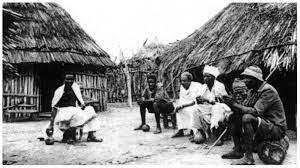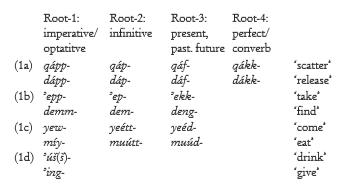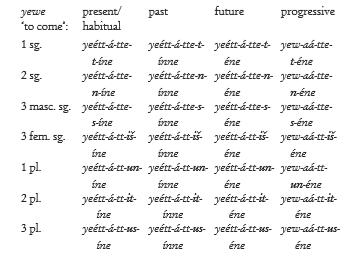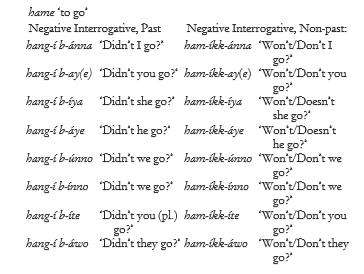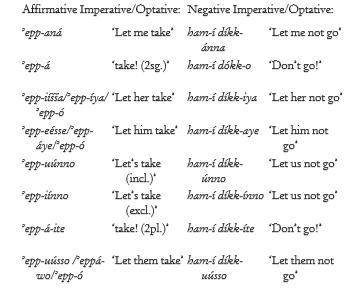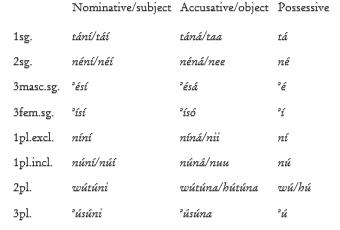
 Please wait...
Please wait...
-
@Ethiopia & The Horn 1+ years agoSewasewer
Zayse and Zargulla are regarded as two dialects of the same language (hereafter: Zargulla-Zayse, Zg.Zs.). They are classified under the East Ometo branch of Omotic. The dialectal variation between them includes lexical differences such as Zargulla zumá vs. Zayse bocé ‘mountain’, Zargulla haáʾe vs. Zayse baadé ‘mouth’, Zargulla kiine vs. Zayse ʾatté ‘back’, Zargulla ʾóoʦo vs. Zayse kábbe ‘work [noun]’. In grammar, the differences include: plural-marking by -ir in Zs. as in tolkó ‘hyena’ vs. tolkír ‘hyenas’ and by -eɗé/-eɗe in Zargulla, e.g., ṣéga ‘goat’ vs. ṣegeɗé. In Zargulla definiteness is marked by suffixes (s. below) whereas in Zayse it is marked by pro-clitic pronouns ʾe (masc. sg.), ʾi (fem. sg.) and ʾu (pl.), e.g., gárma ‘a lion’ vs. ʾe-gárma ‘the lion’. In the present entry, most examples are from Zg. Data on Zayse are from Hayward (1990; 1999).
The consonant segments of Zargulla - Zayse are: stops (p), b, t, d, k, g; affricates ʦ, č, ǧ; implosives ɓ, ɗ; ejectives , ṣ, tṣ, q; fricatives (ɸ), s, z, š, ž, h; nasals m, n; liquids l, r and glides w, y. ž is widely used word-initially whereas the affricates č, ǧ and ʦ are restricted in this position. p and ɸ are alternatively used in word-initial and medial positions. Zargulla - Zayse have five vowels (i, e, a, o, u). Vowel-length (e.g. kóora ‘saddle’ vs. kóra ‘glue’) and consonantgemination (móɗe ‘thought’ vs. móɗɗo ‘stout’) are contrastive. Syllable types include: CVV, CV, CVC and CVVC, e.g.: kée.la ‘terrace’, kes ‘go out’, bíic ‘urine’ respectively. Evidence for CVCC and CVVCC come only from numerals which have lost final vowels, e.g. námʾ ‘two’, ʾoídd ‘four’. Otherwise consonant clusters and geminates are split into two syllables, e.g.: tal.ʾé ‘loan’. Contrast in tone is attested in some words (e.g., keeʦé ‘a house’ vs. kéeʦe ‘to bid prices’); however, Zargulla- Zayse are analysed as tone-accent languages because of the predictable distribution and restrictions on high tone in multisyllabic words.
Basic form of nouns and adjectives may end in e, o or a, as in gozé ‘calabash’, bázo ‘God’ and káʦa ‘food’. There are also consonant-final nominals e.g., íw (place name), míis ‘cow’, ʾagéʦ ‘wind’, dútṣ ‘sound of footsteps’, géešš ‘clean’, dó ‘dumbness’ and úč ‘saliva’ as well as some numerals (s. below). Distinctions are made for gender (masc./ fem.), number (sg./pl.), definiteness and several cases. Two or three of these nominal categories may be expressed by a single, non-segmentable morpheme. E.g., definiteness, sg. and fem. are indicated by -(a)tt-, e.g. doró ‘a sheep’, dor-att-ó ‘the sheep [fem.]’ and doró-z-a ‘the sheep [masc.]’. Plural is marked by -eɗe or -eɗé, e.g., miis ‘a cow’ vs. miis-eɗé ‘cows’. Definite plural is marked by -unṣ, e.g. miis-eɗ-únṣ-ó ‘the cows’. Case distinctions include: 1) Nom[inative] -í for def. masc./ fem. sg. and indefinite pl., e.g. ṣéga ‘a goat’ vs. ṣégaz-í ‘the goat [masc. Nom.]’, ṣéggó-y ‘the goat [fem., Nom.]’ and ṣeeɗé-y ‘goats [pl., Nom.]’; 2) Acc[usative] -á for def. masc. sg., e.g. ṣégaz-á ‘the goat [masc., Acc.]; -ó for def. fem. sg. and def. pl., e.g. ṣégg-ó ‘the goat [fem., Acc.], ṣeeɗúnṣ-ó ‘the goats [def., pl., Acc.]; 3) fem. Gen[itive] is marked by -i, e.g. ṣegg-í ʾité ‘the goat’s [fem.] hide’. Other case markers include dative -(í)s as in ṣegg-ís ‘for the goat [fem.]’, ablative -(í)kopé, e.g. ṣeggíkopé ‘from the goat’.
Most verbs in Zargulla have just one verb-root form (e.g. 1d below). For a few verbs however, there are up to four slightly different verb roots (1a–c). The distribution of the root variants is associated with tense-aspect and mood.
There are productive verb extensions including causative and passive, marked by -(u)ss-/-(u)ʦ- and -(u)tt-, respectively, e.g., bónčo ‘to respect’; caus. bonč-us-á ‘make somebody respected!’ and pass. bonč-útt-a ‘be respected!’. A four-way tense distinction is made: present/habitual marked by -íne, past (-ínne), future (-éne) and the progressive characterized by -aá after the verb root/stem plus the same suffix (-éne) as the future tense.
Subject agreement (cf. highlighted morphemes) is marked on affirmative indicative verbs only when these are in focus. The -á- preceding the focus marker -tte is a lexically determined stem formative; in some verbs -ó- is used instead.
Negation is marked differently in different tenses and moods. In the indicative past, it is marked by the independent negative verb baáʾa whereas in the non-past, -aáʾa is directly affixed to the verb root: tá ʾooʦí baáʾa ‘I did not work’ vs. tá ʾooʦ-aáʾa ‘I do not work’. Subject-agreement is not marked in the indicative negative verb. In the interrogative, negation is marked by suffixes b- (past) and -íkk (non-past):
Negation is marked by the inflecting verb dokk-/díkk- in the imperative/optative:
The basic pronouns are typical of a Ta-/Ne- language:
Dative, instrumental and ablative can be derived by adding the respective morphemes to the (short) object pronouns. Zargulla - Zayse make inclusive/ exclusive distinction in the 1st pers. pl.
Basic numerals are: bizzó ‘1’, námʾ ‘2’, háidʦ ‘3’, ʾoidd ‘4’, ʾišícc ‘5’, ʾizíp ‘6’, laáp ‘7’, lakkúče ‘8’, tansíne ‘9’, támm ‘10’. ṣeét ‘100’ and šíya ‘1000’ are the only simple higher numerals. Others are compounds with or without the linking u or coordinator -nne ‘and’; the quantified noun may occur in sg. or pl., e.g., laáp támm maššeɗé ‘70 knives’, namʾú támma(-nne) námʾ golodó ‘22 sickles’
Demonstratives include ha (proximal), se, hi (distal), yeékk ‘that down there’, woókk ‘that up there’. These could be used pronominally, e.g., ha-í ʾaɗátta ‘this (masc./fem.) is tall’. Interrogative pronominals comprise: ʾaálumma ‘what’, ʾána ‘where (directional)’, ʾánna ‘where (locative)’, ʾánden ‘when’, ʾáns’ún ‘how many’, ʾánapes ‘from where’, ʾaálass or ʾaála ʾute ‘why’, ʾoóde ‘who’ and waánisi ‘how’. In sentences subject-agreement markers are added to these words instead of the verb: e.g. ʾánna-s ʾaíkínne ‘where did he catch (it)?’; ʾánna-iš ʾaíkínne ‘where did she catch (it)?’.
The remaining words of the Herman Bell list are: budó ‘fire’, waaʦé ‘water’, ʾawá ‘sun’, ʾagúnna ‘moon/month’, suuʦ ‘blood’, ʾinṣíre ‘tongue’, ʾaccé ‘tooth’.
The basic word order in clauses is Subject-Object-Verb. Modifiers precede the head.
Source:
Encyclopaedia-Aethiopica
 Please wait...
Please wait...
 Loading content ...
Loading content ...
 Loading content ...
Loading content ...
 Please wait...
Please wait...
Similar topics
Similar topics
 Please wait...
Please wait...


